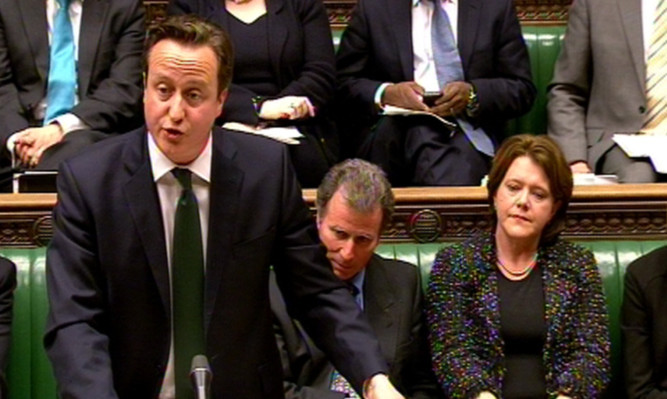David Cameron has insisted the cross-party deal on a royal charter on press regulation defends the principle of a free press.
The Prime Minister, who was granted an emergency Commons debate on the proposed new system in response to Lord Justice Leveson’s report on press standards, said the new regulator would not be set up by legislation – an approach he claimed was “fundamentally wrong in principle”.
The approach of using a royal charter to back the new regulator was agreed by Mr Cameron, Deputy Prime Minister Nick Clegg and Labour leader Ed Miliband in a last-ditch deal to avert a Commons showdown.
But Mr Cameron acknowledged that legislation was necessary to establish a system of exemplary damages for newspapers which did not sign up to the regulator.
He also confirmed that the need for two-thirds of parliamentarians in the Commons and Lords to change the royal charter would be enshrined in law.
But he insisted: “It is legislation to protect the royal charter, it is not legislation to recognise the royal charter.”
Setting out his reasons for opposing more fundamental legislation, he said: “I believe it would be wrong to run even the slightest risk of infringing free speech or a free press in this way.
“As Winston Churchill said, ‘a free press is the unsleeping guardian of every other right that free men prize, it is the most dangerous foe of tyranny’.
“By rejectiong statutory regulation but being in favour of a royal charter this House has defended that principle.”
The Prime Minister was forced to take the unusual step of applying to Commons Speaker John Bercow for permission to hold the debate on the deal reached in the early hours of Monday morning.
Mr Cameron said the royal charter would be submitted to the Queen for approval at the May meeting of the Privy Council.
He said: “What happened to the Dowlers, to the McCanns, to Christopher Jefferies and to many other innocent people who have never sought the limelight was utterly despicable.
“It is right that we put in place a new system of press regulation to ensure that such appalling acts can never happen again. We should do this without any further delay.”
The Prime Minister added: “As Lord Justice Leveson recommended, we need a system of tough, independent self-regulation that will deliver for victims and meet the principles set out in his report.
“This system will ensure upfront apologies, million-pound fines, a self-regulatory body with independence of appointments and funding, a robust standards code, an arbitration service that is free for victims and a speedy complaint handling mechanism.
“We can put all of this in place without the need for statutory regulation.”
